Tobias Kuhn
Evaluating the fully automatic multi-language translation of the Swiss avalanche bulletin
May 23, 2014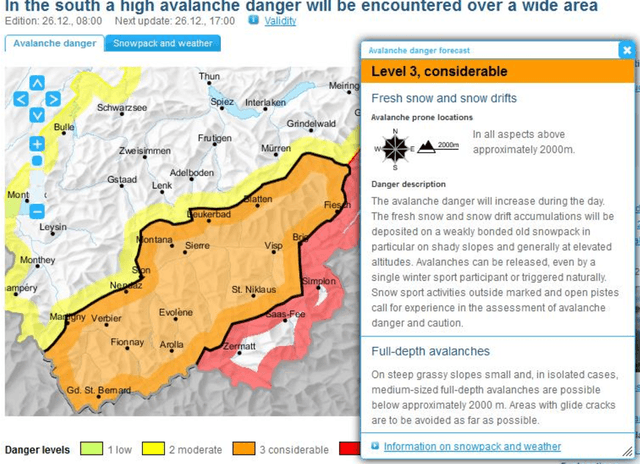
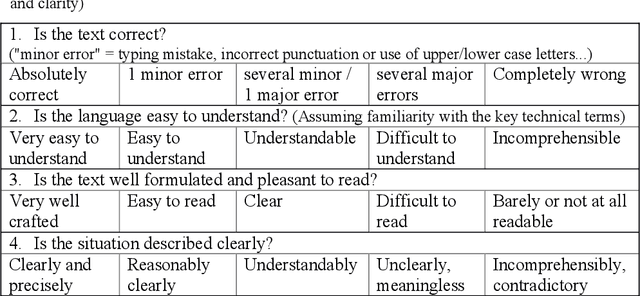


Abstract:The Swiss avalanche bulletin is produced twice a day in four languages. Due to the lack of time available for manual translation, a fully automated translation system is employed, based on a catalogue of predefined phrases and predetermined rules of how these phrases can be combined to produce sentences. The system is able to automatically translate such sentences from German into the target languages French, Italian and English without subsequent proofreading or correction. Our catalogue of phrases is limited to a small sublanguage. The reduction of daily translation costs is expected to offset the initial development costs within a few years. After being operational for two winter seasons, we assess here the quality of the produced texts based on an evaluation where participants rate real danger descriptions from both origins, the catalogue of phrases versus the manually written and translated texts. With a mean recognition rate of 55%, users can hardly distinguish between the two types of texts, and give similar ratings with respect to their language quality. Overall, the output from the catalogue system can be considered virtually equivalent to a text written by avalanche forecasters and then manually translated by professional translators. Furthermore, forecasters declared that all relevant situations were captured by the system with sufficient accuracy and within the limited time available.
Verifiable Source Code Documentation in Controlled Natural Language
Nov 12, 2013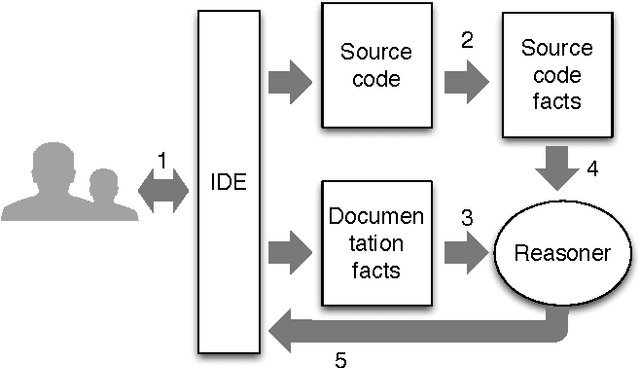

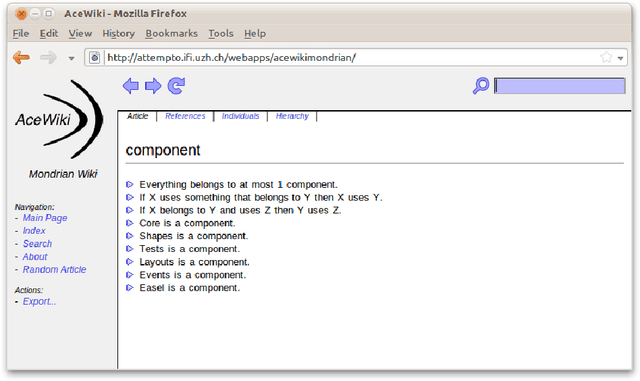
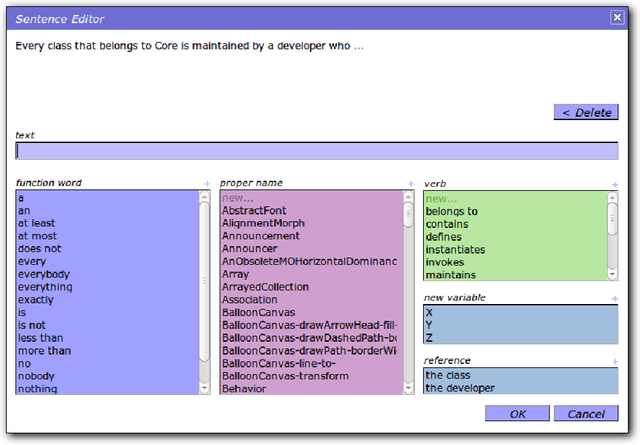
Abstract:Writing documentation about software internals is rarely considered a rewarding activity. It is highly time-consuming and the resulting documentation is fragile when the software is continuously evolving in a multi-developer setting. Unfortunately, traditional programming environments poorly support the writing and maintenance of documentation. Consequences are severe as the lack of documentation on software structure negatively impacts the overall quality of the software product. We show that using a controlled natural language with a reasoner and a query engine is a viable technique for verifying the consistency and accuracy of documentation and source code. Using ACE, a state-of-the-art controlled natural language, we present positive results on the comprehensibility and the general feasibility of creating and verifying documentation. As a case study, we used automatic documentation verification to identify and fix severe flaws in the architecture of a non-trivial piece of software. Moreover, a user experiment shows that our language is faster and easier to learn and understand than other formal languages for software documentation.
A Multilingual Semantic Wiki Based on Attempto Controlled English and Grammatical Framework
Mar 11, 2013



Abstract:We describe a semantic wiki system with an underlying controlled natural language grammar implemented in Grammatical Framework (GF). The grammar restricts the wiki content to a well-defined subset of Attempto Controlled English (ACE), and facilitates a precise bidirectional automatic translation between ACE and language fragments of a number of other natural languages, making the wiki content accessible multilingually. Additionally, our approach allows for automatic translation into the Web Ontology Language (OWL), which enables automatic reasoning over the wiki content. The developed wiki environment thus allows users to build, query and view OWL knowledge bases via a user-friendly multilingual natural language interface. As a further feature, the underlying multilingual grammar is integrated into the wiki and can be collaboratively edited to extend the vocabulary of the wiki or even customize its sentence structures. This work demonstrates the combination of the existing technologies of Attempto Controlled English and Grammatical Framework, and is implemented as an extension of the existing semantic wiki engine AceWiki.
A Principled Approach to Grammars for Controlled Natural Languages and Predictive Editors
Nov 15, 2012


Abstract:Controlled natural languages (CNL) with a direct mapping to formal logic have been proposed to improve the usability of knowledge representation systems, query interfaces, and formal specifications. Predictive editors are a popular approach to solve the problem that CNLs are easy to read but hard to write. Such predictive editors need to be able to "look ahead" in order to show all possible continuations of a given unfinished sentence. Such lookahead features, however, are difficult to implement in a satisfying way with existing grammar frameworks, especially if the CNL supports complex nonlocal structures such as anaphoric references. Here, methods and algorithms are presented for a new grammar notation called Codeco, which is specifically designed for controlled natural languages and predictive editors. A parsing approach for Codeco based on an extended chart parsing algorithm is presented. A large subset of Attempto Controlled English (ACE) has been represented in Codeco. Evaluation of this grammar and the parser implementation shows that the approach is practical, adequate and efficient.
Codeco: A Grammar Notation for Controlled Natural Language in Predictive Editors
Mar 29, 2011
Abstract:Existing grammar frameworks do not work out particularly well for controlled natural languages (CNL), especially if they are to be used in predictive editors. I introduce in this paper a new grammar notation, called Codeco, which is designed specifically for CNLs and predictive editors. Two different parsers have been implemented and a large subset of Attempto Controlled English (ACE) has been represented in Codeco. The results show that Codeco is practical, adequate and efficient.
How Controlled English can Improve Semantic Wikis
Jul 07, 2009



Abstract:The motivation of semantic wikis is to make acquisition, maintenance, and mining of formal knowledge simpler, faster, and more flexible. However, most existing semantic wikis have a very technical interface and are restricted to a relatively low level of expressivity. In this paper, we explain how AceWiki uses controlled English - concretely Attempto Controlled English (ACE) - to provide a natural and intuitive interface while supporting a high degree of expressivity. We introduce recent improvements of the AceWiki system and user studies that indicate that AceWiki is usable and useful.
Combining Semantic Wikis and Controlled Natural Language
Oct 17, 2008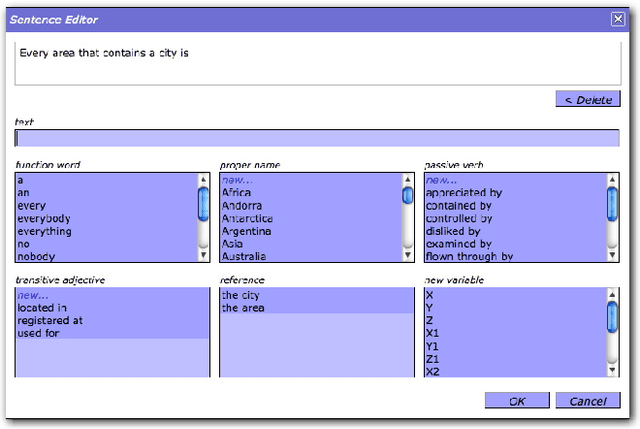
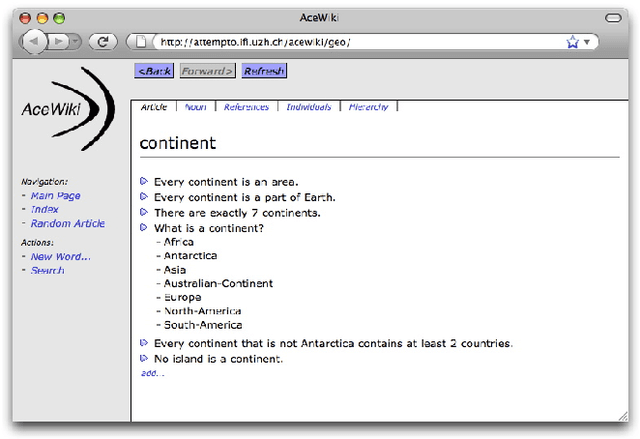
Abstract:We demonstrate AceWiki that is a semantic wiki using the controlled natural language Attempto Controlled English (ACE). The goal is to enable easy creation and modification of ontologies through the web. Texts in ACE can automatically be translated into first-order logic and other languages, for example OWL. Previous evaluation showed that ordinary people are able to use AceWiki without being instructed.
AceWiki: Collaborative Ontology Management in Controlled Natural Language
Jul 29, 2008

Abstract:AceWiki is a prototype that shows how a semantic wiki using controlled natural language - Attempto Controlled English (ACE) in our case - can make ontology management easy for everybody. Sentences in ACE can automatically be translated into first-order logic, OWL, or SWRL. AceWiki integrates the OWL reasoner Pellet and ensures that the ontology is always consistent. Previous results have shown that people with no background in logic are able to add formal knowledge to AceWiki without being instructed or trained in advance.
AceWiki: A Natural and Expressive Semantic Wiki
Jul 29, 2008



Abstract:We present AceWiki, a prototype of a new kind of semantic wiki using the controlled natural language Attempto Controlled English (ACE) for representing its content. ACE is a subset of English with a restricted grammar and a formal semantics. The use of ACE has two important advantages over existing semantic wikis. First, we can improve the usability and achieve a shallow learning curve. Second, ACE is more expressive than the formal languages of existing semantic wikis. Our evaluation shows that people who are not familiar with the formal foundations of the Semantic Web are able to deal with AceWiki after a very short learning phase and without the help of an expert.
* To be published as: Proceedings of Semantic Web User Interaction at CHI 2008: Exploring HCI Challenges, CEUR Workshop Proceedings
 Add to Chrome
Add to Chrome Add to Firefox
Add to Firefox Add to Edge
Add to Edge